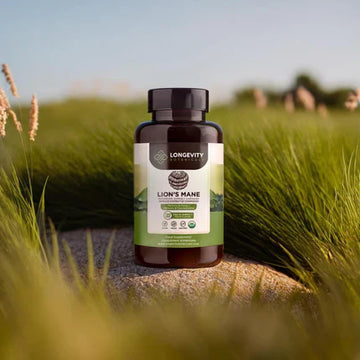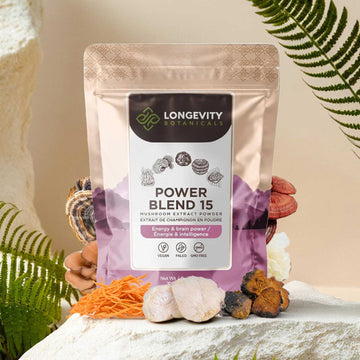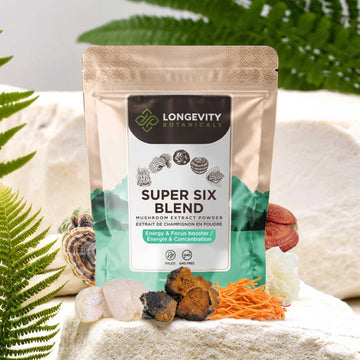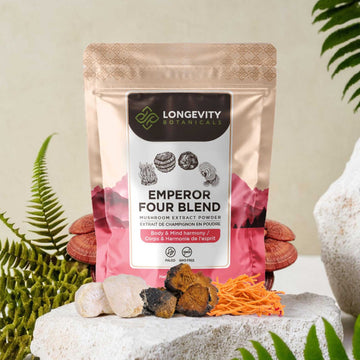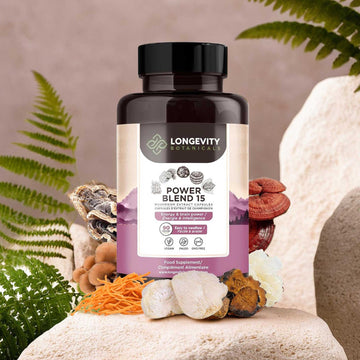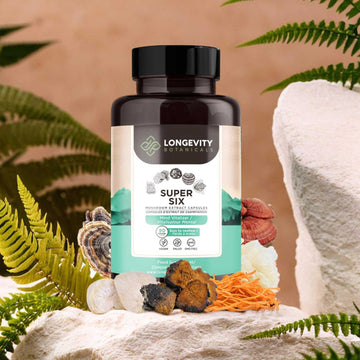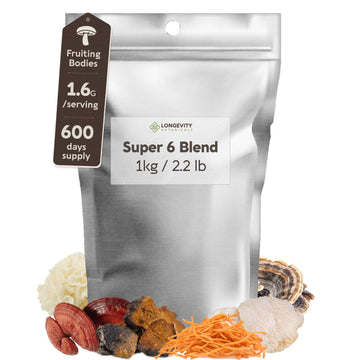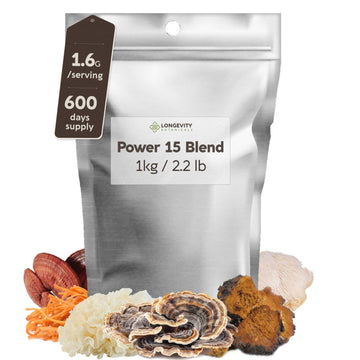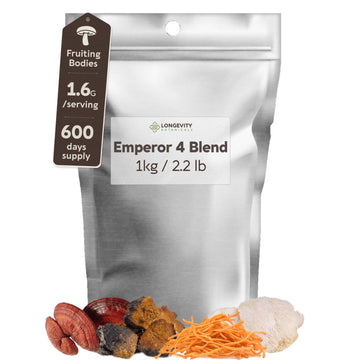Maitake, also called Grifola frondosa, is best known for immune support. It also contains two named extracts, D fraction and SX fraction, that are often discussed for blood sugar control.
This article explains what each fraction is, what human research has actually found, how these extracts may work, and simple, safe ways to test whether maitake helps you.
What this article covers
Plain language first. You will see short paragraphs and clear examples. The goal is a calm, practical guide, not hype.
Evidence limits noted. Human data for blood sugar are small, early, and need larger trials. You will see exactly what was studied and for how long.
Action steps included. You will get a simple plan to try maitake safely and track your own response.
Quick definitions: D fraction versus SX fraction
D fraction. A protein bound beta glucan complex originally studied for immune effects. It is often positioned for immunity and oncology support. It is not the main extract in the published blood sugar reports.
SX fraction. A water soluble glycoprotein extract studied for glucose metabolism. In lab models it improves insulin signaling inside muscle cells. Small human observations link it with lower fasting glucose. For those interested in mechanisms and the pilot human data, see this open access paper on SX fraction and insulin signaling.
What human studies show so far
Case report in people with type 2 diabetes. A short clinical note in Diabetic Medicine described a possible hypoglycemic effect of maitake in patients already on medication. Because it was not a randomized trial and sample size was minimal, it signals promise but cannot prove benefit. You can read the abstract here: Diabetic Medicine, 2001.
Seven person pilot with SX fraction. In a small pilot embedded in a mechanistic paper, seven adults with type 2 diabetes added SX fraction for two to four weeks while continuing their usual oral medication. All seven showed sizable drops in fasting glucose during the short trial window. There was no placebo group, so results are preliminary, but the direction and size of change are noteworthy. Details are reported in the 2013 open access paper.
How to read this evidence. Together, these reports suggest maitake, especially SX fraction, may help improve fasting blood sugar and insulin sensitivity. The evidence is not yet a full scale clinical program. Larger, blinded, longer trials that track HbA1c and continuous glucose metrics are still needed. For a concise research overview, see this review on SX fraction and type 2 diabetes.
How maitake extracts may support blood sugar
Making insulin signals work better. In insulin resistant muscle cells, SX fraction has been shown to restore key steps in the insulin pathway, from the insulin receptor to downstream Akt, which increases glucose uptake. This matches the fasting glucose changes seen in the pilot observation noted above.
Helping with meal spikes. Separate lab work with maitake components points to inhibition of alpha glucosidase, a digestive enzyme that breaks complex carbs into simple sugars. When that enzyme is less active, post meal spikes may be lower. For a broad review of maitake constituents and these mechanisms, see the open access summary of Grifola frondosa bioactives here.
Anti inflammatory context. Many people with elevated glucose also have low grade inflammation. Beta glucans from mushrooms help train the immune system toward balanced responses. This indirect effect may support metabolic health over time, even though it is not a direct glucose lowering action by itself.
Who might consider maitake
People with early metabolic risk. If your doctor has flagged elevated fasting glucose or an elevated HbA1c in the prediabetes range, maitake can be one supportive tool inside a full lifestyle plan.
People with type 2 diabetes on stable therapy. If your medication plan is stable and you can monitor glucose reliably, a cautious, clinician guided trial of a transparent maitake product is reasonable. The evidence is early, so close tracking and medical supervision are essential.
People who want food first options. Culinary maitake is a fiber rich, nutrient dense food. Using the mushroom in meals is a safe foundation even if you later add a supplement.
How to choose a quality maitake supplement
Check the label for the fraction. If your goal is glucose support, look for products that clearly state SX fraction or provide evidence for standardized glycoproteins. If a product highlights D fraction, understand that most human glucose signals point to SX fraction instead.
Favor fruiting body integrity. Products made from real fruiting bodies are more consistent with traditional use and often show higher beta glucans. If you want to learn why this matters for potency, see our guide on fruiting body versus mycelium.
Look for transparency. Reputable brands share batch testing for identity and purity, including heavy metals and microbes. Clear extraction details and quantified beta glucans build trust.
Pick a format you will use. Capsules are consistent and simple. Powders mix into shakes and broths. If you want a starting point, compare formats in our Maitake collection, or view Maitake capsules and Maitake powder.
Safe, practical ways to try maitake
Start low, go slow. Begin with the lowest label dose for your chosen product. Give it two to four weeks before judging.
Timing. Many people split servings with meals. If fasting glucose is the focus, consider taking part of the dose with dinner, always within your clinician’s guidance.
Track what matters. Use a simple log for fasting glucose, pre meal readings, two hour post meal readings, and how you feel. If you wear a continuous glucose monitor, review average glucose and time in range each week.
Coordinate with your clinician. If you take insulin or a sulfonylurea, adding new glucose lowering agents can increase the risk of low blood sugar. Discuss a trial plan and thresholds for adjusting therapy.
A simple two week self test
Days 1 to 3. Stabilize your routine. Aim for protein at each meal, vegetables and fiber, daily walking after meals, and consistent sleep. Take no new supplements in this run in period.
Days 4 to 17. Add maitake as directed on the label. Keep meals and activity consistent. Measure fasting glucose each morning and one post meal reading daily, rotating meals across the week.
Day 18. Compare the two weeks. Look for a lower seven day average for fasting glucose, fewer large post meal spikes, and the same or better energy. Share results with your clinician for context.
Frequently asked points
Does D fraction help blood sugar. D fraction is better studied for immune outcomes. Most glucose related human signals point to SX fraction.
Can I just eat the mushroom. Yes, culinary maitake is a good start. If you want a focused trial for glucose, a standardized extract is easier to track and dose.
How fast will I notice a change. In the small SX fraction pilot, changes appeared within two to four weeks. Your timeline may differ based on diet, activity, sleep, medications, and baseline glucose.
Putting it together
Maitake is a safe food and a promising supplement for blood sugar support. The most relevant human reports are small. A case note suggested a hypoglycemic effect, and a seven person pilot linked SX fraction with meaningful drops in fasting glucose over a short window. Mechanistic studies explain how this could happen, by improving insulin signals inside cells and by slowing carbohydrate breakdown in the gut.
If you want to try maitake, choose a clear, well tested product, start low, and track your numbers. Use it as part of a larger plan that includes food quality, movement, sleep, and stress control. For a friendly primer on the mushroom itself, you can also read our overview, The marvels of maitake.
Important note. This article is educational. It is not medical advice. If you have diabetes or take drugs that lower blood sugar, involve your healthcare team before you add new supplements.

